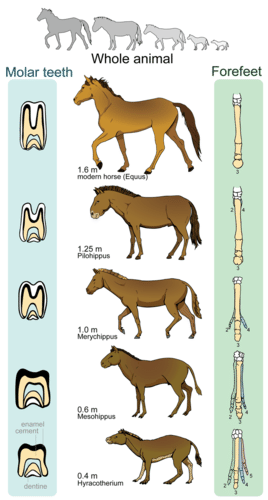4.4: Fossils
- Page ID
- 3020
\( \newcommand{\vecs}[1]{\overset { \scriptstyle \rightharpoonup} {\mathbf{#1}} } \)
\( \newcommand{\vecd}[1]{\overset{-\!-\!\rightharpoonup}{\vphantom{a}\smash {#1}}} \)
\( \newcommand{\id}{\mathrm{id}}\) \( \newcommand{\Span}{\mathrm{span}}\)
( \newcommand{\kernel}{\mathrm{null}\,}\) \( \newcommand{\range}{\mathrm{range}\,}\)
\( \newcommand{\RealPart}{\mathrm{Re}}\) \( \newcommand{\ImaginaryPart}{\mathrm{Im}}\)
\( \newcommand{\Argument}{\mathrm{Arg}}\) \( \newcommand{\norm}[1]{\| #1 \|}\)
\( \newcommand{\inner}[2]{\langle #1, #2 \rangle}\)
\( \newcommand{\Span}{\mathrm{span}}\)
\( \newcommand{\id}{\mathrm{id}}\)
\( \newcommand{\Span}{\mathrm{span}}\)
\( \newcommand{\kernel}{\mathrm{null}\,}\)
\( \newcommand{\range}{\mathrm{range}\,}\)
\( \newcommand{\RealPart}{\mathrm{Re}}\)
\( \newcommand{\ImaginaryPart}{\mathrm{Im}}\)
\( \newcommand{\Argument}{\mathrm{Arg}}\)
\( \newcommand{\norm}[1]{\| #1 \|}\)
\( \newcommand{\inner}[2]{\langle #1, #2 \rangle}\)
\( \newcommand{\Span}{\mathrm{span}}\) \( \newcommand{\AA}{\unicode[.8,0]{x212B}}\)
\( \newcommand{\vectorA}[1]{\vec{#1}} % arrow\)
\( \newcommand{\vectorAt}[1]{\vec{\text{#1}}} % arrow\)
\( \newcommand{\vectorB}[1]{\overset { \scriptstyle \rightharpoonup} {\mathbf{#1}} } \)
\( \newcommand{\vectorC}[1]{\textbf{#1}} \)
\( \newcommand{\vectorD}[1]{\overrightarrow{#1}} \)
\( \newcommand{\vectorDt}[1]{\overrightarrow{\text{#1}}} \)
\( \newcommand{\vectE}[1]{\overset{-\!-\!\rightharpoonup}{\vphantom{a}\smash{\mathbf {#1}}}} \)
\( \newcommand{\vecs}[1]{\overset { \scriptstyle \rightharpoonup} {\mathbf{#1}} } \)
\( \newcommand{\vecd}[1]{\overset{-\!-\!\rightharpoonup}{\vphantom{a}\smash {#1}}} \)
\(\newcommand{\avec}{\mathbf a}\) \(\newcommand{\bvec}{\mathbf b}\) \(\newcommand{\cvec}{\mathbf c}\) \(\newcommand{\dvec}{\mathbf d}\) \(\newcommand{\dtil}{\widetilde{\mathbf d}}\) \(\newcommand{\evec}{\mathbf e}\) \(\newcommand{\fvec}{\mathbf f}\) \(\newcommand{\nvec}{\mathbf n}\) \(\newcommand{\pvec}{\mathbf p}\) \(\newcommand{\qvec}{\mathbf q}\) \(\newcommand{\svec}{\mathbf s}\) \(\newcommand{\tvec}{\mathbf t}\) \(\newcommand{\uvec}{\mathbf u}\) \(\newcommand{\vvec}{\mathbf v}\) \(\newcommand{\wvec}{\mathbf w}\) \(\newcommand{\xvec}{\mathbf x}\) \(\newcommand{\yvec}{\mathbf y}\) \(\newcommand{\zvec}{\mathbf z}\) \(\newcommand{\rvec}{\mathbf r}\) \(\newcommand{\mvec}{\mathbf m}\) \(\newcommand{\zerovec}{\mathbf 0}\) \(\newcommand{\onevec}{\mathbf 1}\) \(\newcommand{\real}{\mathbb R}\) \(\newcommand{\twovec}[2]{\left[\begin{array}{r}#1 \\ #2 \end{array}\right]}\) \(\newcommand{\ctwovec}[2]{\left[\begin{array}{c}#1 \\ #2 \end{array}\right]}\) \(\newcommand{\threevec}[3]{\left[\begin{array}{r}#1 \\ #2 \\ #3 \end{array}\right]}\) \(\newcommand{\cthreevec}[3]{\left[\begin{array}{c}#1 \\ #2 \\ #3 \end{array}\right]}\) \(\newcommand{\fourvec}[4]{\left[\begin{array}{r}#1 \\ #2 \\ #3 \\ #4 \end{array}\right]}\) \(\newcommand{\cfourvec}[4]{\left[\begin{array}{c}#1 \\ #2 \\ #3 \\ #4 \end{array}\right]}\) \(\newcommand{\fivevec}[5]{\left[\begin{array}{r}#1 \\ #2 \\ #3 \\ #4 \\ #5 \\ \end{array}\right]}\) \(\newcommand{\cfivevec}[5]{\left[\begin{array}{c}#1 \\ #2 \\ #3 \\ #4 \\ #5 \\ \end{array}\right]}\) \(\newcommand{\mattwo}[4]{\left[\begin{array}{rr}#1 \amp #2 \\ #3 \amp #4 \\ \end{array}\right]}\) \(\newcommand{\laspan}[1]{\text{Span}\{#1\}}\) \(\newcommand{\bcal}{\cal B}\) \(\newcommand{\ccal}{\cal C}\) \(\newcommand{\scal}{\cal S}\) \(\newcommand{\wcal}{\cal W}\) \(\newcommand{\ecal}{\cal E}\) \(\newcommand{\coords}[2]{\left\{#1\right\}_{#2}}\) \(\newcommand{\gray}[1]{\color{gray}{#1}}\) \(\newcommand{\lgray}[1]{\color{lightgray}{#1}}\) \(\newcommand{\rank}{\operatorname{rank}}\) \(\newcommand{\row}{\text{Row}}\) \(\newcommand{\col}{\text{Col}}\) \(\renewcommand{\row}{\text{Row}}\) \(\newcommand{\nul}{\text{Nul}}\) \(\newcommand{\var}{\text{Var}}\) \(\newcommand{\corr}{\text{corr}}\) \(\newcommand{\len}[1]{\left|#1\right|}\) \(\newcommand{\bbar}{\overline{\bvec}}\) \(\newcommand{\bhat}{\widehat{\bvec}}\) \(\newcommand{\bperp}{\bvec^\perp}\) \(\newcommand{\xhat}{\widehat{\xvec}}\) \(\newcommand{\vhat}{\widehat{\vvec}}\) \(\newcommand{\uhat}{\widehat{\uvec}}\) \(\newcommand{\what}{\widehat{\wvec}}\) \(\newcommand{\Sighat}{\widehat{\Sigma}}\) \(\newcommand{\lt}{<}\) \(\newcommand{\gt}{>}\) \(\newcommand{\amp}{&}\) \(\definecolor{fillinmathshade}{gray}{0.9}\)
What's on this rock?
This rock contains a fossilized marine animal known as a crinoid. Scientists study fossils of plants, animals, and other organisms in order to better understand what life was like on Earth many years ago and how it has changed over time. Fossils are important evidence for the theory of evolution.
The Fossil Record
Fossils are the preserved remains of animals, plants, and other organisms from the distant past. Examples of fossils include bones, teeth, and impressions. By studying fossils, evidence for evolution is revealed. Paleontologists are scientists who study fossils to learn about life in the past. Fossils allow these scientists to determine the features of extinct species. Paleontologists compare the features of species from different periods in history. With this information, they try to understand how species have evolved over millions of years (Figure below).

Until recently, fossils were the main source of evidence for evolution (Figure below). Through studying fossils, we now know that today's organisms look much different in many cases than those that were alive in the past. Scientists have also shown that organisms were spread out differently across the planet. Earthquakes, volcanoes, shifting seas, and other movements of the continents have all affected where organisms live and how they adapted to their changing environments.

Rock Layers and the Age of Fossils
There are many layers of rock in the Earth's surface. Newer layers form on top of the older layers; the deepest rock layers are the oldest. Therefore, you can tell how old a fossil is by observing in which layer of rock it was found. The fossils and the order in which fossils appear is called the fossil record. The fossil record provides evidence for when organisms lived on Earth, how species evolved, and how some species have gone extinct. Geologists use a method called radiometric dating to determine the exact age of rocks and fossils in each layer of rock. This technique, which is possible because radioactive materials decay at a known rate, measures how much of the radioactive materials in each rock layer have broken down (Figure below).

Radiometric dating has been used to determine that the oldest known rocks on Earth are between 4 and 5 billion years old. The oldest fossils are between 3 and 4 billion years old. Remember that during Darwin's time, people believed the Earth was just about 6,000 years old. The fossil record proves that Earth is much older than people once thought.
Summary
- Fossils, or preserved parts of organisms from the distant past, have shown that species change over time.
- Radiometric dating can be used to determine the age of fossils by measuring the how much of the radioactive materials in each rock layer have broken down.
Explore More
Use the resources below to answer the questions that follow.
Explore More I
- James Hagadorn, Paleontologist: Traces of Early Animal Life
- Why is it believed the first animals left no fossilized bones?
- What do paleontologists look for when they search for evidence of early organisms?
- How old are the geologic deposits Dr. Hagadorn is searching? How old is the evidence he has found for the first mobile organisms?
- What does the ability to hunt others do to the fossil record? Why?
Explore More II
- Jenny Clack, Paleontologist: The First Vertebrate Walks on Land
- What is a "tetrapod"? What question do paleontologists hope they can answer by studying them?
- What is special about "Boris"?
Explore More III
- Richard Dawkins: Show me the intermediate fossils! at http://www.youtube.com/watch?v=o92x6AvxCFg (2:34)
- What evidence is there that modern whales once had hindlimbs?
- Pakicetus and Rodhocetus are considered to be ancestors of modern whales. Scientists still argue about how aquatic Pakicetus was, but Rodhocetus is considered to be a largely aquatic animal.
- Where is the nostril located on Pakicetus?
- Where is the nostril located on Rodhocetus?
- What is the relationship in time between these two species?
- What modern animal is most closely related to modern whales? What is the evidence? In what kind of environment does this modern relation live?
Review
- What is a fossil? Give three examples.
- What has the fossil record revealed about life on Earth?
- How does radioactive dating work?
- What is radioactive dating used for?

